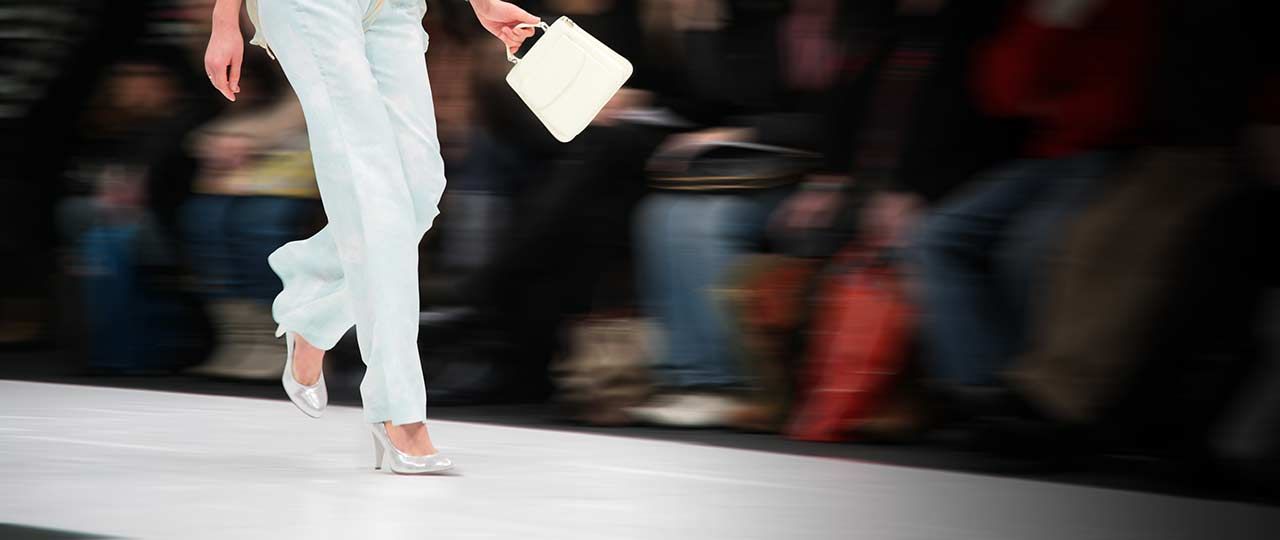
Kate Eales
Head of Regional Residential Agency


Head of Regional Residential Agency
The coming together of fashion and interior design
Whereas once interior fashions may have trailed runway designs by several years, in today’s world of social media and collaboration, the lines between the two have become increasingly blurred. Whether you stick to your own personal style or love keeping up with the latest fashions, your home décor can reflect your changing tastes as well as your wardrobe.
In previous decades, there was a lag of a few years between clothes hitting the catwalk and similar trends appearing in furniture stores. With the growth of social media sites such as Instagram, Pinterest and Houzz, fashion and interiors brands are now hearing the same things at the same time. The two worlds are merging and working together, rather than being independent influencers of each other.
While some fashion brands – Ralph Lauren, Versace and Armani among them – have established interiors lines, the past few years have seen an increase in collaborations between major fashion houses and strong homeware brands. Diesel has joined forces with Moroso and Foscarini to create a range of furniture and lighting solutions. Last year, Gucci launched a home line (Gucci Décor) and even Birkenstock are branching out from creating comfy footwear to designing anatomically shaped beds.
But while we may change our clothing seasonally, the thought of redesigning our homes twice a year is enough to weaken the heart of the staunchest interior trendsetter. Which is why many catwalk trends are carried over to interiors in accessories such as cushions, wall art, candles and rugs. These are much easier (not to mention cheaper) to play around with than replacing an expensive sofa or redesigning your kitchen.
This is reflected in the offerings from the interior lines of luxury fashion houses. Some, such as Gucci and Versace, focus on purely on accessories: tableware, fabrics and wallpapers. A dash of Gucci glamour will be more impactful than an entire room decorated with snarling tigers and bold floral patterns (which, let’s face it, could be a little overwhelming).
For those designers who offer larger pieces of furniture, these tend to be in more classic styles. This suits brands such as Armani, who focus more on style and less on short-term fashion trends in both their clothing and furniture designs.
Even mainstream brands are getting in on the designer action. In recent months, Ikea has announced collaborations with perfume house, Byredo and fashion label, Off-White. So you can have a touch of designer decadence without the accompanying price tag.
How architecture influences fashion
Whereas interior design has often trailed in the wake of fashion, with architecture it is often the other way around. Both fashion and architecture deal with form and function. At its simplest, making a practical necessity look beautiful. But while fashions and interiors may change by the season, architecture is often a cultural representation of a particular period in time.
As Coco Chanel famously once said, “Fashion is architecture: it is a matter of proportions”.
Both architecture and clothing design is about manipulating shape and form to create something beautiful and (runway clothing aside) practical. It’s perhaps not surprising then, that there is considerable crossover between the two disciplines. Designers such as Versace and Cardin studied architecture before moving to the fashion world, and notable architects have likewise dipped their toes into the world of fashion.
But when it comes to this relationship, fashion draws more from architecture than the other way around. After all, buildings have much longer lifespans than clothes. Runway fashion has the freedom and flexibility to reflect this inspiration quite literally: gothic cathedrals, the Hearst Tower and the Palace of Versailles have all been seen in the exaggerated proportions and extravagant detailing of catwalk designs.
But the influence of architecture can also be seen in the designs that make it down to the high street. Patterns inspired by the play of light and colour inside a grand temple decorate a silk scarf. Minimalist concrete buildings and open spaces influence a simple – but perfectly fitted – white dress. And many accessories, from bags to jewellery, are inspired by the shapes, forms and spaces created by architectural works.
Fashion and interiors trends for 2018
With fashion and interiors now hand in hand, wider cultural changes are driving fashion and interior trends. This includes TV shows, such as Stranger Things, which have inspired a surge of ‘80s nostalgia. Yes, sharp shoulder pads, bold colours and animal prints will be hitting our wardrobes this autumn. And if you thought you’d seen the last of pastel colours, chintz fabrics and geometric patterns in interiors, think again.
Millennial pink will still be making an appearance this year, but it’s giving way to lavender and mint, with both colours appearing in this year’s catwalk collections. 2018 is about understated tones, with sage green, soft mustards, jades and olives tipped as the palette of choice for interior décor, particularly in bedrooms.
If understated colours leave you feeling underwhelmed, then don’t panic. Bold pigments such as peacock blue, burnt orange and cactus green are set to be hot this year and if your wardrobe is inspired by Miu Miu or Marc Jacobs, then bright, overscale, ’60s-inspired florals may be the perfect accent for your home.
The bleached woods and minimalism of the Scandi style finally seem to be giving way. This year, minimalism is geometric patterns, and dark woods are set to make a comeback. Mahogany, dark oak or walnut with brass detailing will add a touch of retro glamour to any room.
With everything going on in the world, when it comes to our homes, we’re looking for comfort and reassurance. And there’s nothing more comforting than velvet, which tops the list of this year’s fabric trends. Just in case you were needing an excuse to invest in that velvet Chesterfield you’ve always wanted…
Fashion is also getting more sustainable. Clothes made from plastic bottles and recycled wool featured on the catwalk at London Fashion Week, and in the home, 2017’s trend for innovative recycled materials is set to continue. Sustainability with style is this year’s motto.
If this all feels a little overwhelming, remember that fashion and style is a personal choice. You can pick and choose elements and trends which reflect your personality and suit your lifestyle. Most importantly, it’s about making your house feel like home.